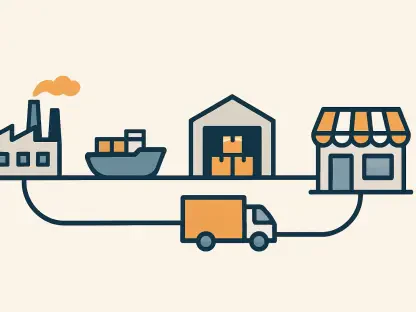In today’s rapidly growing technology landscape, the pursuit of increased efficiency and reduced costs has become paramount. Knowledge distillation stands at the forefront of developments in artificial intelligence, revolutionizing how AI models are constructed and deployed. The principle involves transferring the “knowledge” from complex models to smaller, more efficient ones without compromising performance. This technique enables the creation of streamlined AI systems that operate with decreased computational load, saving time and resources. Knowledge distillation not only transforms the operational solvency of businesses but also impacts the broader landscape of AI development by making cutting-edge AI accessible to a wider audience. As artificial intelligence continues to evolve, knowledge distillation emerges as a vital tool, driving both innovation and practical implementations across various sectors.
A Historical Perspective on Knowledge Distillation
Foundations and Early Adoption
Introduced as a formal concept in a pivotal 2015 paper by notable figures such as Geoffrey Hinton, knowledge distillation emerged as a solution to inefficiencies prevalent in ensemble models. These earlier models, which relied on numerous large-scale systems operating concurrently, posed challenges due to their substantial computational demands and prohibitive costs. Hinton’s work demonstrated that complex models held intrinsic insights often described as “dark knowledge,” encompassing the nuanced understanding of data relationships beyond binary accuracy measures. This revelation laid the groundwork for translating these subtler insights from larger, sophisticated “teacher” models into smaller, more manageable “student” versions. With this conceptual shift, AI practitioners began recognizing the potential of distillation in optimizing model performance while ensuring resource efficiency.
Evolution and Expansion
Despite initial skepticism, knowledge distillation has evolved from a niche technique to an essential tool within the AI toolkit. This evolution was expedited as technological advancements, and the exponential growth of data necessitated more economical approaches to AI development. Major breakthroughs included the development of Google’s BERT model, which underscored the need for effective, lightweight alternatives. This led to the creation of DistilBERT, leveraging distillation principles to maintain the integrity and capabilities of the original model while significantly decreasing operational costs and footprint. This shift marked the beginning of a paradigm where size no longer dictated scope, as smaller models could now execute sophisticated tasks efficiently. The increasing accessibility and effectiveness of distillation consequently drove widespread adoption, making it central to AI strategies across industries.
Current Landscape and Controversies
Contemporary Applications
Knowledge distillation today is embedded at the core of AI development strategies, offering substantial benefits in diverse applications. High-profile implementations, such as innovations in natural language processing, computer vision, and autonomous technology, highlight the broad applicability of distillation across varied domains. Large technology firms have embraced this method, integrating it into service offerings and products, thereby exemplifying its versatility in real-world scenarios. For instance, tech giants like OpenAI and Amazon are actively utilizing distillation to refine AI capabilities without incurring excessive computational expenses. These practices underscore the vital role distillation plays in modern AI innovation, with the method serving not only as a tool for efficiency but also for democratizing access to advanced AI, ensuring smaller companies can leverage high-performing yet cost-effective models.
Ethical and Legal Challenges
The rise of knowledge distillation has not been without its controversies, primarily revolving around intellectual property and ethical considerations. Incidents such as DeepSeek’s alleged unauthorized use of OpenAI’s model via distillation have sparked debates regarding the proprietary nature of AI “knowledge” and fair use. These issues illuminate broader questions concerning the transparency, ownership, and regulation of distilled models. While the dissemination of “teacher” model insights through distillation fosters technological progress, it also raises potential conflicts in terms of origin and digital rights. Addressing these concerns necessitates developing robust frameworks that balance innovation with ethical integrity. As AI models grow increasingly sophisticated, the conversation surrounding the delineation of original contributions versus derivative works in AI will continue to shape the field.
Future Directions of Knowledge Distillation
Research and Development Opportunities
As technology advances at an unparalleled pace, research and development into optimizing knowledge distillation techniques are ongoing, revealing fruitful ground for innovation. Investigations by institutions such as the NovaSky lab at the University of California, Berkeley, explore the intersections of distillation with advanced cognitive processes in AI, including chain-of-thought reasoning and problem-solving. These studies significantly reduce operational costs while enhancing AI’s analytical capabilities. Emerging findings suggest that expanding the applications of distillation could yield unexpected efficiencies across traditionally resource-heavy domains. Through these initiatives, distillation promises to further refine AI response to increasingly complex challenges, extending the scope and impact of AI across previously inaccessible fields.
Anticipated Developments
Looking ahead, knowledge distillation is poised to experience continued advancements, driving novel applications and methodologies to the forefront of AI technology. Anticipated developments include integrating distillation with cutting-edge technologies like quantum computing and ethical AI algorithms, potentially revolutionizing computational models anew. This synergy will likely result in AI systems that are not only faster and more capable but also increasingly adaptable to emerging ethical standards. Moreover, the expansion of distillation in educational frameworks and global markets could accelerate AI adoption on a scale previously unattainable. These evolutions position knowledge distillation as a key driver of sustainability in computational innovation, directly aligning with industry trends and societal needs.
Reflecting on the Path Forward
The journey of knowledge distillation within AI highlights a transformative approach that enhances model efficiency and accessibility. This technique has seamlessly integrated into the AI field, offering robust solutions to traditional computational challenges. As AI continues its trajectory toward increased capability and ubiquity, knowledge distillation remains an invaluable asset, facilitating nuanced exploration of AI’s potential while conserving vital resources. Its role in contemporary AI reflects broader trends prioritizing efficiency, ethical considerations, and innovation, underscoring its enduring significance. As new challenges and opportunities emerge in the AI landscape, knowledge distillation stands ready to address them, contributing to a dynamic, future-ready technological ecosystem. The ongoing exploration in distillation promises to continue shaping the narrative of AI, charting a path toward sustainable, intelligent growth.









